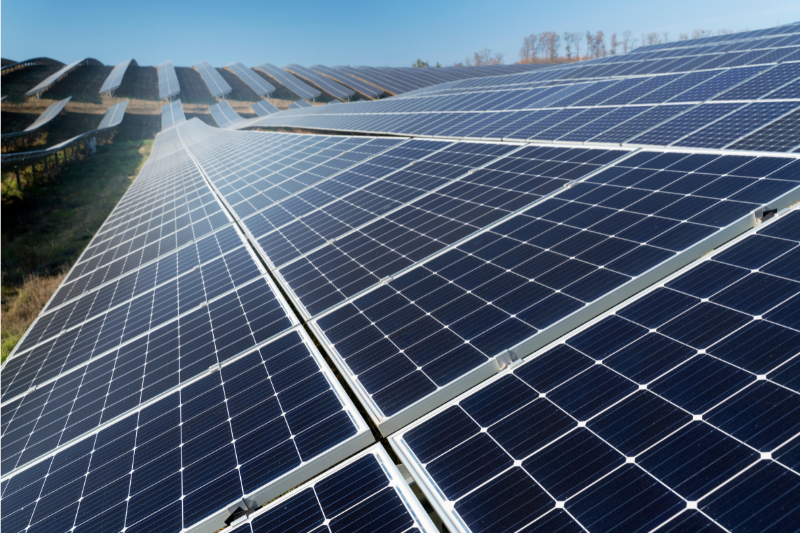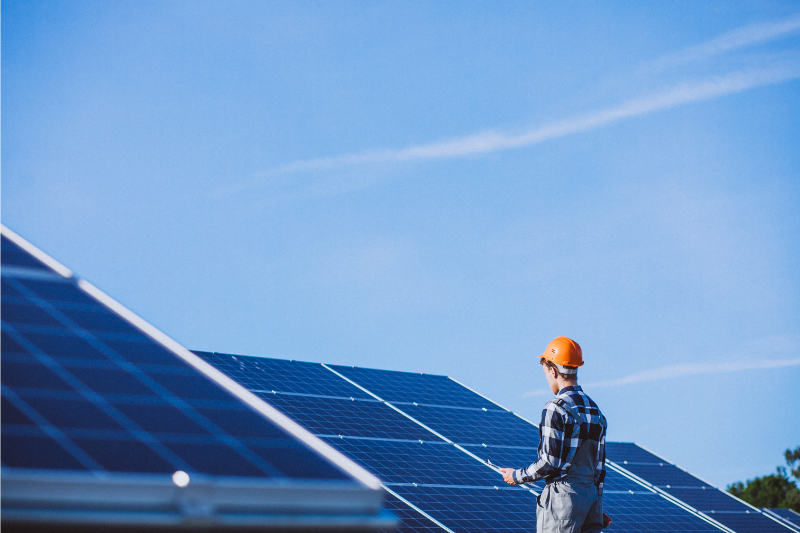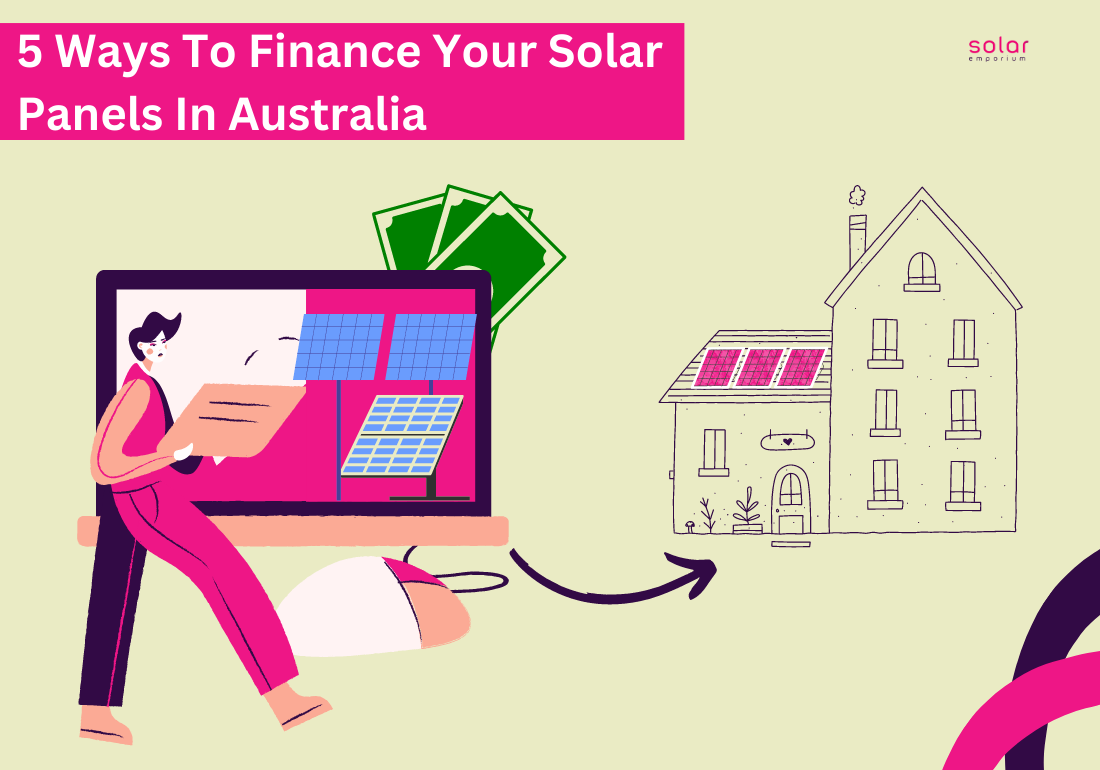Choosing to install solar panels is due to its significant benefits as an excellent investment and increases property value. Apart from accessing clean energy, it effectively offsets a substantial portion of your monthly energy bill.
But the upfront cost of solar panels can be a considerable amount. That’s where solar finance in Australia comes in. Solar panel financing allows homeowners to acquire the necessary funds to purchase a solar panel system through solar loans, solar leases, and PPA agreements.
Solar financing in Australia allows homeowners to pay instalments without any upfront cost. However, solar financing is different from other forms of debt. A well-financed solar system can save you more money than the amount you spend on the investment.
Solar panel financing is where customers use loans and leases to get the funds needed to purchase a solar system in instalments or monthly payments over time. They use it to avoid paying out-of-pocket at the time of purchase.
Today let’s talk about solar financing and its branches.
Here Are 5 Common Methods For Solar Financing:
1. Green Loans
Green loans are personal loans offered by financial institutions that prioritise environmental and community support. They come with low-interest rates and are ideal for financing solar panels, energy-efficient windows, and air conditioning.
These loans have flexible repayment periods ranging from 1 to 7 years and typically involve minimal setup fees, low ongoing fees, and no early repayment penalties.
However, it is essential to be aware of potential fees associated with loan setups, such as establishment fees, monthly fees, and early repayment fees, as they can increase the overall cost.
Green loans are suitable for individuals with good credit.
Pro Tip: To avoid monthly expenses, discuss with your finance provider the possibility of aligning the loan term with estimated solar savings.
2. Cash
Investing in a solar power system can be highly profitable if you are debt-free and have available cash. Solar systems provide tax-free returns surpassing current interest rates banks, or government bonds offer.
For those who consume a significant amount of electricity during the day, a 6.6kW system costs $6,500. Typically, it recoups its cost within approximately five years, resulting in a 12% annual return.
Even if you are away during the day, the returns may not be as impressive but still exceed bank interest rates. The cash option is best for individuals with sufficient savings, especially cashed-up and debt-free retirees seeking higher returns on their nest egg without significant risk.
3. Power Purchase Agreements (PPAs)
PPAs allow solar consumers to install a solar system without upfront costs by paying the solar company for the generated electricity.
For instance, they might charge 20c per kilowatt-hour compared to the typical 30c grid electricity rate. While this may seem like an obvious choice, there is one drawback.
With a Power Purchase Agreement (PPA), you must purchase a minimum amount of electricity from the retailer, regardless of your actual usage. It means you could end up paying for unnecessary energy.
PPAs are commonly used in commercial properties and factories with high daytime electricity consumption, where most solar electricity is consumed on-site. However, for non-commercial purposes, PPAs are generally not recommended.
4. Personal Loan
A finance company can assist individuals who are unable to borrow more on their home mortgage or prefer the motivation of a higher interest rate to pay off the loan faster. A personal loan may be more cost-effective despite the higher interest rates.
Like green loans, specific lenders consider factors like loan purpose and homeownership status, potentially offering more favourable interest rates. With loan pre-approval from a finance company, you can negotiate as a cash buyer and secure the best solar system.
If you decide to sell your property, the loan remains unaffected as it is personally guaranteed rather than tied to your house.
5. Solar Leasing /Renting
With solar leasing, the leasing company owns the system until the full payment is made over the lease term. It is not easily transferable to another property during the leasing period.
The outstanding loan balance must be settled if you sell your house because the contract cannot be transferred to the new homeowner.
Compare the cash price of the system to the total amount paid over the lease term. The difference represents the interest paid for immediate access to solar energy.
Solar financing provides a solution for the high upfront cost of solar systems. It is essential to be cautious of financing schemes with hidden expenses. Each financing method has benefits and considerations, so understand and choose wisely based on your circumstances.
At Solar Emporium, we simplify the process by designing customized solutions based on your requirements with premium products. Get a free solar quote now!

System of Solar Leasing
Solar leasing is a payment plan where residential and commercial customers in Australia make monthly payments to a solar supplier for a solar PV system installed on their property. This form of solar consumption is becoming more prevalent as the renewable energy sector grows in the country.
Under a solar leasing plan, the customer repays the cost of the system over five to ten years, with the solar company typically responsible for system maintenance. However, interest is charged during the repayment period.
And it makes the overall cost slightly higher than the upfront payment. With solar leasing, the system is leased directly from the solar company.
How Does Power Purchase Agreement (PPA) Work
A power purchase agreement (PPA) is a financing option where a company, owns and maintains a solar system installed on a homeowner’s property. The homeowner purchases the energy generated by the system.
PPAs are gaining popularity due to their low, upfront costs, with homeowners paying a predetermined rate based on the solar energy generated on their property. The rates are typically fixed for the duration of the agreement, which can range from 15 to 20 years.
Differences Between Solar Financing Options
The main difference between solar leasing, a PPA, purchasing a system, and financing approach lies in the cost structure.
Purchasing a system requires a large upfront payment, while financed solar systems have no down payment and are typically locked into a contract for 15 years or more.
Solar leasing allows clients to use solar power without paying for the panels directly. Still, they pay lease payments and any additional power purchased from the utility.
A PPA pays the pre-agreed fixed rate to the company that owns the system. And any system maintenance or repairs are the company’s responsibility. The savings grow over time as the rates are fixed. It may increase slightly during the contract period.
PPAs also come with system monitoring provided by the company to ensure optimal performance. Additionally, the PPA depreciates over time. And it allows customers to purchase the system from the company during the agreement.
Solar Leasing VS Buying
Leasing and buying solar panels allow homeowners to benefit from utility savings and reduce their environmental impact. However, deciding between leasing and owning solar panels is an important consideration.
Leasing Solar Panels
Leasing solar panels offers a more accessible option for customers who may not have the necessary upfront funds to purchase solar panels. The homeowner does not own the panels with leasing, as a third party owns them.
That means the equipment is under the ownership of the leasing company.
Buying Solar Panels
Additional credits or reimbursements may be available based on the state or manufacturer’s incentives when purchasing solar panels. However, buying solar panels requires an upfront investment. Seek free quotes from Solar Emporium for accurate pricing information.
Which Payment Option Is Better?
Determining the best payment option for buying or leasing solar panels depends on several factors, such as the time you plan to stay in your home and the available funds for investment.
Purchasing solar panels is generally more financially beneficial if you have the necessary funds. Despite the average installation cost of around $14,000, the ROI through energy savings typically takes seven years.
You can also use federal tax credits and reimbursements as the system owner.
On the other hand, leasing solar panels allows you to start benefiting from reduced utility bills and environmental benefits with little to no upfront cost.
Although you won’t qualify for tax credits or reimbursements in this scenario, leasing can be an attractive option for those unable to invest independently in solar panels.

Thing To Be Cautious About
While these options may appear attractive at first glance, it’s essential to delve deeper. Reasons to be cautious about solar leases and solar power purchase agreements (PPAs) are mentioned below:
Cost of capital
Solar lease and PPA providers often compare their offerings to outright solar panel purchases, suggesting that keeping cash in your pocket could yield higher returns in other investments.
However, this comparison may need to be revised. Investments in solar panels are more akin to low-risk options such as term deposits or bonds. Investing in solar can provide steady, tax-free returns.
Savings
Leasing solar panels may seem appealing as it implies avoiding cleaning, maintenance, part replacement, and monitoring costs.
But those familiar with solar panels understand that solar systems require minimal attention and can operate almost effortlessly with the right purchase.
Investing more upfront in quality components like solar inverters and solar batteries can save you from future hassles.
Price Inflation
Be wary of lease quotes that assume a high annual increase in grid electricity prices. While this trend may have been observed over the past few years, official forecasts project a lower growth, around 3%.
And some regions even anticipate prices going down. A reasonable lease fee compared to a grid with a 7% increase may hold a different appeal if grid prices remain stable or decline.
Solar Emporium can help you make an informed decision, exercise caution, and assist you with expertise if needed.







